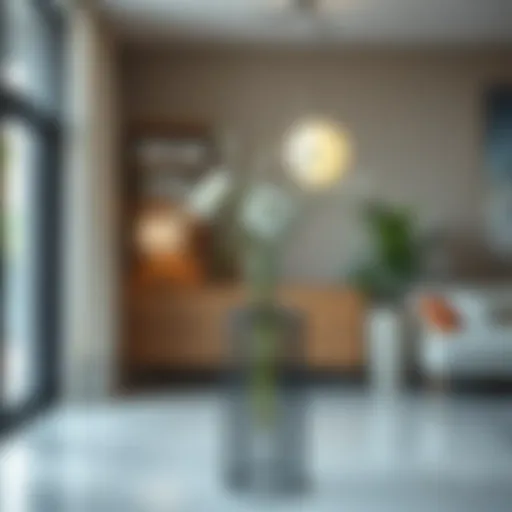Creative Office Furniture Arrangements for Productivity
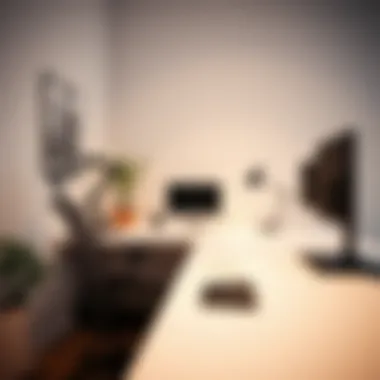
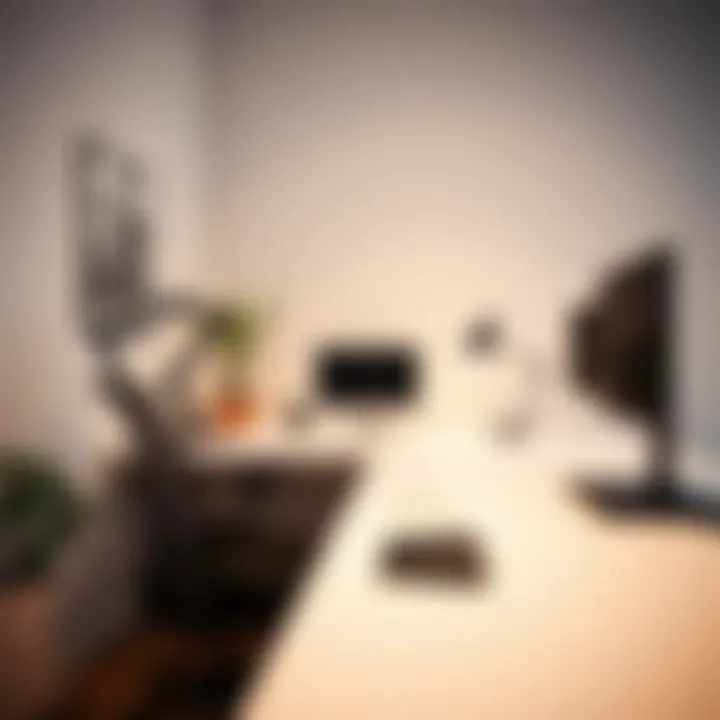
Intro
In the ever-evolving landscape of modern work, the notion of a productive workspace goes beyond just having a desk and a chair. The setup of office furniture reflects current trends and is becoming crucial for fostering efficiency, comfort, and even personal expression in the workplace. Whether you find yourself working from home, in a co-working space buzzing with creativity, or in a corporate establishment, the arrangement of your workspace carries significant weight.
The importance of an innovative office furniture setup lies not only in aesthetics but also in its impact on mental well-being and productivity. People today are increasingly mindful of how their environment can either hinder or enhance their workflow. This article dives deep into various innovative ideas for office setups, aimed at helping you transform your workspace sustainably while keeping comfort at the forefront.
By exploring the latest furniture trends and offering practical DIY projects, you'll gather crucial insights to tailor your office space according to your unique needs. So let's embark on this journey, ready to rethink the ordinary and embrace the extraordinary possibilities of office furniture setups.
Prelude to Office Furniture Setup
Setting up an office space is a crucial aspect that impacts productivity, comfort, and overall well-being. The arrangement and type of furniture used can make a significant difference in how individuals interact with their work environment. A thoughtfully planned office setup not only enhances efficiency but also creates a harmonious atmosphere conducive to creativity and focus.
The Importance of Office Setup
An effective office setup is not just about aesthetics; it’s about functionality and comfort. For homeowners and renters, a well-organized workspace can lead to better work-life balance, especially in remote working scenarios. For designers and retailers, the right arrangement showcases furniture effectively, enticing customers. Furthermore, a strategic layout minimizes distractions.
When considering an office's layout, it's essential to keep in mind:
- The flow of movement: Can people move easily without bumping into furniture?
- Ergonomics: Are the chairs and desks designed to support the user’s posture?
- Personalization: Does the setup reflect individual styles and preferences?
A good office setup pays dividends: improved mood, enhanced focus, and, ultimately, better work output. Thus, investing time and thought in this area can yield substantial returns.
Current Trends in Office Furniture
The landscape of office furniture is continually evolving, driven by the need for adaptability and innovation. Currently, several trends define how we approach workspace design:
- Sustainable Materials: A pronounced shift towards eco-friendly materials influences purchasing decisions. Bamboo, reclaimed wood, and recycled metals are making waves in the industry.
- Multi-functional Pieces: Furniture that serves multiple purposes is on the rise. Think of desks that can convert to standing stations or modular seating that can be rearranged as needed. This versatility suits both small spaces and collaborative environments.
- Technology Integration: Height-adjustable desks with built-in charging ports and smart office accessories aim to meet the demands of a tech-savvy workforce. Users appreciate setups that seamlessly blend traditional workspaces with modern technological requirements.
"Design isn't just what it looks like and feels like. Design is how it works."
—Steve Jobs
To stay updated, design enthusiasts should look at platforms like Pinterest, Reddit, and popular retailers’ websites. There, users can collect ideas and see real-world applications of emerging trends.
Overall, the landscape of office furniture continues to grow and adapt, providing valuable resources for homeowners, designers, and retailers alike, striving for functional and appealing office setups.
Understanding Workspace Needs
Understanding the workspace needs is crucial for creating an environment that fosters productivity and comfort. This section delves into two primary considerations: defining the purpose of the space and recognizing limitations that might come with it. Each element plays a significant role in molding the ideal office setup, catering to both function and aesthetic appeal.
Identifying the Purpose of the Space
Every workspace serves a distinct purpose, whether it’s a cozy nook for remote work or a bustling corporate area where collaboration thrives. The first step in tailoring your office setup is to identify what you aim to achieve with the space. Are you striving for inspiration in creativity, or is the focus mainly on enhancing workflow efficiency?
- Home Office vs. Corporate Setup: A home office might require more personal touches to keep you motivated, while a corporate environment may prioritize collaborative zones for team projects.
- Nature of Work: If your work involves frequent video calls, soundproofing and a decent backdrop become pivotal. Similarly, designers might need large surfaces to spread out materials, which suggests a different layout and furniture style.
"Every bit of furniture should earn its keep. If it doesn’t, it’s just taking up space."
This philosophy drives the essential question: What activities will take place in your workspace? Considering daily tasks and their requirements lays the groundwork for choosing furniture that meets those specific needs.
Evaluating Space Limitations
Understanding the limitations of your available space cannot be overstated. No matter how grand your vision may be, physical constraints will shape your possibilities. Here’s what you should keep in mind:
- Square Footage: Be mindful of the total area you have to work with. A small room might necessitate furniture that folds away or serves multiple functions, such as a desk that transforms into a conference table.
- Shape and Layout: The layout of the space can affect how furniture is arranged. Are there any architectural features like windows or columns that will impact your setup? It’s key to design around such features rather than against them.
- Traffic Flow: Consider how people will move through the space. No one wants to feel like they’re navigating an obstacle course just to reach their desk. Ensure that pathways are clear and that furniture is arranged to facilitate easy movement.
Remember that effective planning entails a blend of vision and pragmatism. By marrying the purpose of the workspace with an acute awareness of its limitations, you’ll be positioned to design an office that is not only efficient but also harmonious with your working style.
In this way, both identifying the purpose and evaluating limitations work hand in hand to inform the optimum furniture setup strategies.
Home Office Setup Ideas
Setting up a home office goes beyond merely slapping a desk in a corner and calling it a day. The way you arrange your workspace can significantly affect your productivity and comfort. In our increasingly remote work-driven world, having a well-thought-out home office is not just a luxury, but rather a necessity. This article will explore creative ways to make the most of your home office setup, considering unique aspects that cater both to aesthetics and functionality.
Maximizing Small Spaces
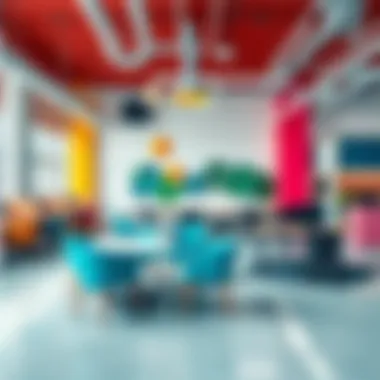
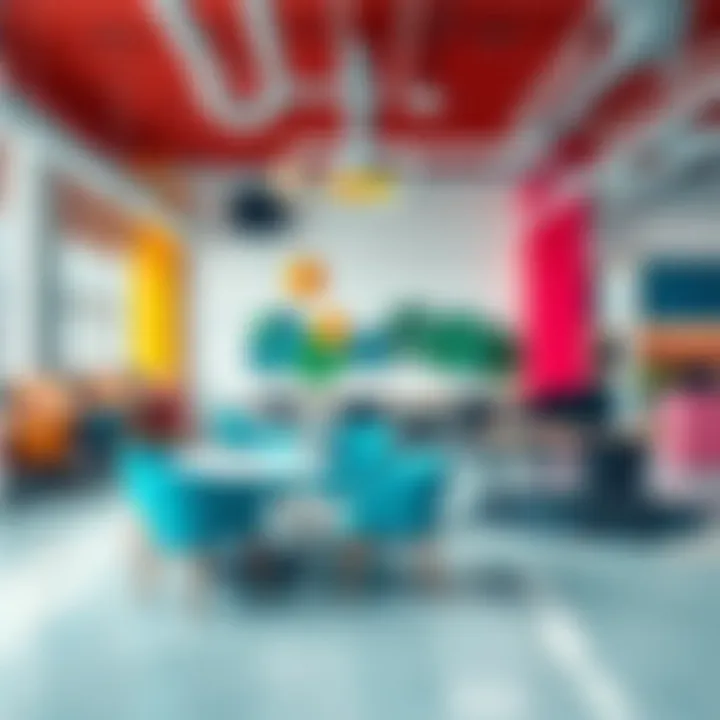
Incorporating smart ideas for home office design is crucial, especially when space is tight.
Multi-functional Furniture
When dealing with limited square footage, multi-functional furniture emerges as a beacon of practicality. Just think about it—a desk that doubles as a dining table or a sofa bed that transforms into a work area after hours. This adaptability is one of its key characteristics, making it a popular choice in modern home office setups.
Imagine a compact desk that, when you finish work, can fold up together with a chair, leaving you with an unobstructed space to relax. It's a brilliant solution, balancing efficiency with lifestyle convenience. However, while multi-functional pieces come with many benefits, they can sometimes be less durable than their standalone counterparts, especially if they're designed for frequent use.
Vertical Storage Solutions
Vertical storage solutions are another effective way to make the most of confined spaces. Utilizing wall space not only maximizes your floor area but also adds an artistic touch to your office environment. With shelves rising high to the ceiling, you create an impression of spaciousness that can be very inviting.
These storage options, whether they're floating shelves or innovatively designed bookcases, provide an ideal way to utilize otherwise neglected space. Plus, they keep your work materials organized and within reach, which adds to efficiency. However, a downside could be that vertical storage sometimes requires a bit more effort to access items stored at the top, making it potentially inconvenient for daily use.
Creating a Productive Environment
Fostering a productive environment is essential when setting up a home office. Two primary components play a significant role: ergonomic furniture and natural light.
Ergonomic Chairs and Desks
Ergonomic chairs and desks are no longer just fancy additions to an office space; they are vital for maintaining health during prolonged work hours. Featuring adjustable heights, lumbar support, and flexible armrests, these chairs cater to a user's unique posture, promoting comfort and reducing physical strain over time. This aspect not only enhances productivity but also encourages proper body alignment.
Despite the benefits, one must consider that investing in high-quality ergonomic furniture can be an initial financial strain. However, the long-term positives, like decreased discomfort and fatigue, often outweigh the costs involved.
Natural Lighting Considerations
Natural lighting considerations can radically transform your workspace. Studies suggest that access to natural light not only improves mood but also enhances focus and energy levels. Positioning your desk near a window or using light-colored materials helps make the area feel brighter and more open. This connection to outside elements, such as trees or a blue sky, can invoke a sense of calm in what can often feel like a confined space.
However, it’s crucial to be cognizant of glare and overheating; utilizing adjustable blinds or sheer curtains can solve this problem. Balancing light is about maximizing its benefits while curbing any discomfort, ultimately leading to a rich and conducive work atmosphere.
Corporate Office Furniture Arrangements
Corporate office furniture arrangements have evolved in the recent years, morphing from rigid, traditional layouts into more innovative and functional designs. These arrangements are paramount in promoting employee well-being and boosting productivity within a corporate environment. Selection of furniture and layout can either encourage collaboration or provide necessary privacy which is crucial for focus-heavy tasks. The right arrangements can transform an ordinary workspace into a vibrant hub that inspires creative thought, while also addressing individual needs and preferences in the workplace.
Collaborative Workspace Design
Open Plan Layouts
Open plan layouts represent a significant shift toward dynamic working environments. This configuration encourages communication and collaboration, tapping into synergies that often emerge when individuals are placed in close quarters. Key to its appeal is the spaciousness it introduces, providing a sense of freedom rather than confinement. The informal atmosphere generated can break down barriers between departments, promoting a collective spirit among team members.
However, these designs do have their drawbacks. Noise can be a persistent issue, potentially hindering concentration for some workers. Flexibility becomes paramount; incorporating movable partitions can help delineate spaces when needed, balancing openness with the necessity for privacy.
Breakout Areas
Breakout areas serve as crucial components within corporate furniture arrangements, offering a space designed for informal conversation, relaxation, or even brainstorming sessions. The primary characteristic of these areas is their inviting atmosphere, generally marked by comfortable seating options and vibrant decor. They promote a cultural shift toward creativity and dynamism, bridging the gap between work and play.
A unique benefit of breakout areas is their role in enhancing the workplace experience; they act as a refuge from the rigors of a structured workspace. Nonetheless, a delicately designed breakout area can either foster creativity or lead to distractions, making the choice of furniture and layout essence for maintaining focus.
Privacy and Focus Zones
Soundproofing Techniques
In a sea of bustling colleagues, soundproofing techniques become a linchpin for maintaining productivity amid the chaos. These methods help create designated quiet zones, shielding sensitive conversations and tasks from disruptions that often arise in corporate setups. Whether through the use of acoustic panels, noise-absorbing materials, or strategically placed furnishings, effective soundproofing can transform an open area into a haven of quiet.
These features stand out because they not only enhance focus but also improve emotional well-being—reducing stress that can come from noisy, disruptive environments. However, such investments can be costly, and maintaining these areas often requires ongoing attention to ensure effectiveness.
Cubicle Arrangements
Cubicle arrangements have often been the backbone of corporate workspaces, valued for their ability to provide a semblance of privacy within a crowded office. These setups allow employees to focus on their tasks without constant distractions from their peers. The defining characteristic of cubicles is their modularity, providing adaptability to fit various layouts and preferences.
While these designs reduce noise and enable concentration, they can often feel isolating. To counteract this, many companies have begun to incorporate open-top cubicles or incorporate personal items to foster a bit of personal touch. A significant advantage lies in their flexibility—cubicles can be reconfigured easily to accommodate team sizes and dynamics over time.
Co-working Spaces: Flexibility and Design
Co-working spaces are the modern answer to the traditional office environment. They offer a blend of flexibility and design that caters to a diverse workforce. These spaces not only provide a place to work but also foster creativity and collaboration. As more people embrace remote work and freelance opportunities, the significance of such setups becomes clearer. A well-designed co-working space can boost productivity, enhance communication among team members, and create a sense of community.
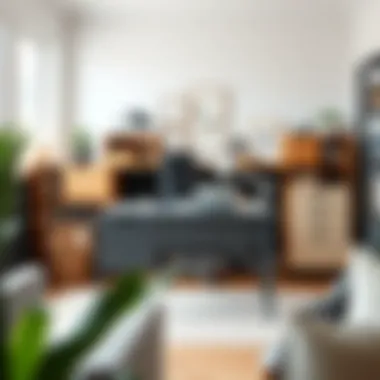
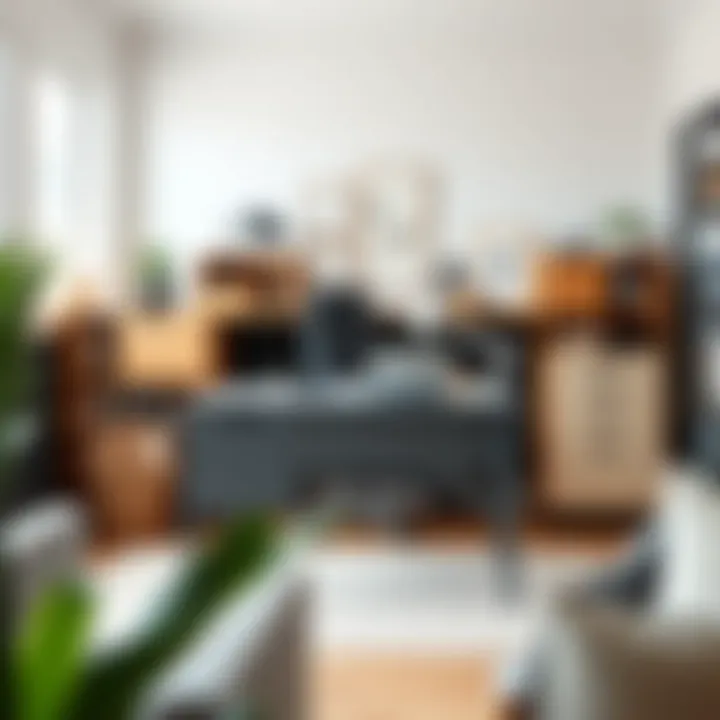
Creating Shared Areas
A critical element of co-working spaces is the creation of shared areas. These spaces are where individuals from various backgrounds and industries mingle and share ideas. The essence of shared areas lies in their ability to promote interaction and collaboration, which can lead to unexpected synergies and partnerships.
Hot Desking Solutions
Hot desking is a popular solution in the world of co-working spaces. This concept allows individuals to choose a workspace on a first-come, first-served basis. The main characteristic of hot desking is flexibility. Employees can move around freely, which can keep the work environment fresh and dynamic.
Hot desking encourages mobility and can significantly reduce the need for dedicated office space, which is particularly appealing for startups and small businesses.
The unique feature of hot desking is its adaptability; it allows for quick adjustments based on the number of people in the space on any given day. However, there are some drawbacks as well. Some workers may feel a lack of ownership over their workspace, which could impact their comfort level. Nonetheless, the main advantage lies in its ability to maximize space in an ever-evolving workplace.
Community Seating
Community seating also plays a vital role in enhancing the collaborative atmosphere in co-working spaces. This type of seating encourages gatherings and discussions, fostering a sense of belonging among individuals. The key characteristic of community seating is its openness; typically arranged in clusters or circles that promote face-to-face interactions.
The unique feature of community seating is its flexibility in accommodating various group sizes. This makes it easy for teams to convene for brainstorming sessions or informal meetings. On the downside, community seating may lack the privacy that some individuals require for focused work. Nonetheless, when leveraging this approach, it promotes a vibrant and dynamic work culture, enhancing connections among professionals.
Incorporating Technology
With the integration of technology, co-working spaces are evolving rapidly. Modern amenities like smart desks and integrated charging stations are essential to ensure that these spaces meet the requirements of tech-savvy professionals. The incorporation of technology not only enhances the user experience but also streamlines various tasks that individuals may encounter during their workday.
Smart Desks and Lighting
Smart desks and lighting systems are becoming standard features in co-working settings. These desks can automatically adjust to find the ideal height for individuals, promoting ergonomic health. The key characteristic of a smart desk is its interactive nature—it can provide feedback on work patterns and suggest healthier options.
A unique feature of smart desks is their ability to connect to an app, allowing users to track their posture and productivity. On the flip side, these desks often come with a higher price tag, which might deter smaller co-working spaces from adopting this technology. Still, the benefits of improved ergonomics paired with the potential for increased output might outweigh these costs for businesses aiming to optimize their workspace.
Integrated Charging Stations
Another critical aspect in modern co-working designs is the incorporation of integrated charging stations. These stations serve a dual purpose; they offer convenience and prevent clutter from accumulating in the shared spaces. The main characteristic of integrated charging stations is their seamless design, fitting into existing furniture without compromising aesthetics.
Their unique advantage is the efficiency they provide, allowing users to keep their devices charged without using multiple outlets scattered throughout the space. However, the potential downside is the need to monitor the functionality of these stations, as broken or slow chargers can disrupt productivity.
Furniture Material Considerations
When diving into the depths of office furniture setup, the choice of materials plays a crucial part in determining not just the aesthetic appeal but also the functionality and longevity of your workspace. We often find ourselves caught up in the looks, overlooking how material influences aspects like sustainability, maintenance, and comfort. Selecting the right materials can mean the difference between a fleeting setup that wears out quickly and one that stands the test of time, enhancing both productivity and employee satisfaction.
Sustainable Materials
Bamboo and Recycled Woods
Bamboo and recycled woods are leading the charge in sustainable office design. These materials not only carry a low environmental footprint but also bring a unique character to your workspace. Bamboo, in particular, is a fast-growing grass that regenerates quickly, making it a renewable resource. Recycled woods, on the other hand, breathe new life into old materials, reducing waste effectively.
The key characteristic of bamboo is its strength and lightness, which makes it incredibly versatile for furniture pieces ranging from desks to shelving. Its unique feature is its natural resistance to moisture and pests, ensuring durability even in varied conditions. However, it’s essential to be mindful of where the bamboo is sourced from, as some bamboo farming practices can harm local ecosystems.
Recycled woods might come with a rustic charm that many find appealing. Yet, it's important to recognize that these woods can have inconsistent quality or hidden damages from previous use. Both materials, while beneficial, need careful consideration to ensure they align with your office’s goals.
Eco-friendly Fabrics
Eco-friendly Fabrics
Moving beyond the hard finishes, the choice of fabrics is just as crucial when designing a sustainable office setup. Eco-friendly fabrics offer an avenue for reducing harmful impacts on both workers and the environment. These materials are often sourced from organic cotton, hemp, or recycled fibers, which contribute to lowered chemical usage and waste in production.
The key characteristic of eco-friendly fabrics is their breathability and comfort, which can enhance not only the look of an office chair but also the health of the user. Not to mention, these fabrics are often treated with less harmful chemicals, making them a safer choice for indoor air quality. They tend to carry a lifespan similar to or longer than traditional materials, provided they are maintained properly.
However, sourcing and costs can sometimes be a drawback, with eco-friendly options often coming at a premium. It becomes essential to weigh the initial investment against the long-term benefits, both in terms of durability and health. Select fabrics that align with the overall vision of your workspace to avoid feeling like a mismatch.
Durability and Maintenance
Choosing High-Quality Finishes
Choosing high-quality finishes is not just a matter of luxury but an investment in the future of your office furniture. Finishes can involve various coatings and treatments that give both protection and flair to wooden surfaces. From varnishes to oils, the choices available dictate how well a piece of furniture will withstand the rigors of daily use.
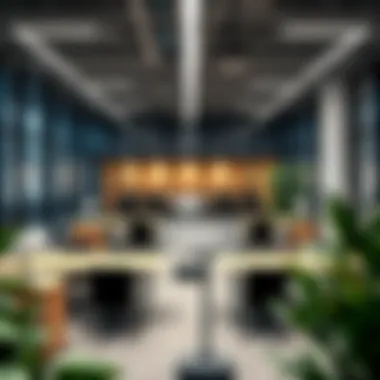
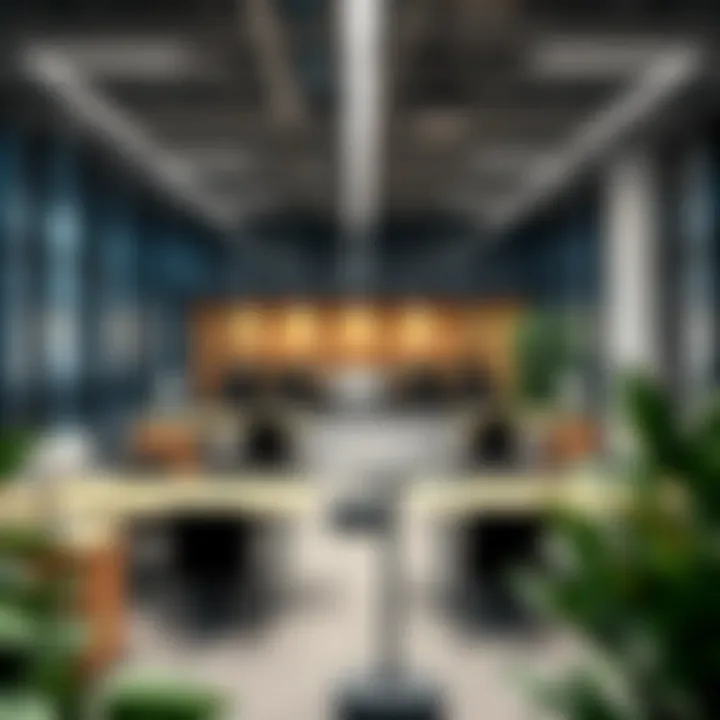
Investing in high-quality finishes means better resistance to scratches, stains, and fading. The unique feature is their capacity to enhance the natural beauty of the material while preserving its structural integrity. For instance, a sturdy varnished surface makes for easier clean-up compared to one left bare.
However, it’s vital to choose appropriate finishes for the environment. Some chemicals may emit VOCs, which can impact indoor air quality. This requires a fine balance between aesthetic appeal and health considerations, ensuring the longevity of the finish without compromising safety.
Long-term Care Tips
Implementing effective long-term care tips is essential in maintaining your investment in office furniture. Regular maintenance can mean the difference between a vibrant work environment and one that looks tired and worn down. Basic cleaning methods, appropriate conditioning materials, and even scheduling periodic checks can extend the life of your furniture significantly.
A key characteristic of long-term care is its simplicity. Basic steps like dusting surfaces regularly or avoiding harsh cleaning products can keep materials looking fresh. The unique feature lies in how preventive care effectively prohibits larger damages from occurring—think of it as catching a cold before it develops into pneumonia. Regular upkeep is not just about appearances; it preserves the finish and structure of the furniture.
But it requires ongoing dedication, which some may overlook amid the day-to-day hustle. The overall aim is to establish a culture of care around your office, where furniture isn't just equipment but a part of the environment that needs attention and nurturing.
Aesthetic Elements in Office Design
When considering an office setup, aesthetics often take a backseat to functionality. However, they are vital for creating a work environment that is not only productive but also enjoyable to spend time in. The space we work in can significantly influence our mood, motivation, and overall mental health. A thoughtfully designed office can transform cold, sterile environments into warm, inviting spaces that reflect individuality and creativity.
Aesthetic elements can include everything from the color of the walls to the choice of furniture and decorative pieces. The key benefits of prioritizing aesthetics in office design include:
- Enhanced Mood: Colors and decor can either uplift or drain energy. Designing with intention can lead to increased enthusiasm for tasks.
- Increased Creativity: A space that is visually engaging can stimulate ideas and inspire creativity.
- Brand Representation: For corporate settings, aesthetics can reflect company values and culture, making a strong impression on clients and visitors.
- Comfort and Well-being: A beautiful and comfortable space reduces stress and increases job satisfaction.
Color Psychology and Its Impact
Colors can evoke emotional responses, making them an important tool in office design. Understanding color psychology helps to create environments conducive to certain activities. For example, blues and greens are often associated with calmness and tranquility, making them great choices for offices where focus is paramount. Meanwhile, yellows and oranges can foster energy and creativity but should be used sparingly to avoid overwhelming the senses.
Consider the following colors and their potential impacts on office atmosphere:
- Blue: Reduces anxiety and promotes concentration. Ideal for productivity-focused areas.
- Green: Represents balance, harmony, and nature. Encourages restfulness and is suitable for collaborative spaces.
- Red: Stimulates energy and enthusiasm. It may be beneficial in areas meant for dynamic debates or brainstorming sessions.
- Yellow: Associated with happiness and optimism. Best used as an accent color to avoid overstimulation.
By thoughtfully selecting paints or choosing vibrant furniture pieces, office managers can enhance the overall atmosphere, thus impacting employee engagement positively.
"The office is not just a place to work, it’s a canvas that reflects the ambitions and culture of those who inhabit it."
Incorporating Art and Personal Touches
Art can play a transformative role in office aesthetics. By including artwork that resonates with employees, business can elicit emotional connections, making the workspace more enjoyable. Wall art, sculptures, and even installations can serve as points of discussion among colleagues, fostering collaboration and creative thinking.
When selecting art, consider:
- Local Artists: Supporting local talent can create a sense of community and pride.
- Themes: Align art choices with the company’s values or culture for cohesive branding.
- Employee Contributions: Involving employees in choosing the art can bolster a sense of belonging and personalization.
Personal touches such as plants or framed photos on desks can also humanize the workspace. Greenery not only improves air quality but also adds a splash of life to otherwise dull corners.
In essence, aesthetic elements in office design are more than mere decoration—they are powerful tools that can enhance the overall work experience. By understanding the significance of color, art, and personal touches, one can create a workplace that promotes well-being and productivity.
Finale: Crafting Your Ideal Office Space
Creating a well-configured office space isn’t just about sticking a desk and chair in a room. It's about weaving together various elements that resonate with your personal style and functional needs. This conclusion highlights how every aspect of your workspace, from furniture selections to the arrangement, carries weight in shaping your productivity and overall well-being.
When you can craft an office that reflects your lifestyle and caters to your needs, you’re more likely to feel inspired and focused. Consider that every detail matters. For instance, the choice of ergonomic furniture not only promotes health but can also significantly reduce fatigue. Likewise, colors that soothe or energize can alter your mood and mindset towards work.
Final Thoughts on Office Setup
Using the insights from this article, allow yourself to go beyond the traditional setups that have long been the norm. Embrace innovation and creativity. The layout of a workspace speaks volumes about its function. Perhaps you want a communal feel within a corporate setting, or maybe, you need a more private enclave for concentration. A flexible approach is crucial; don’t shy away from experimenting with different configurations and styles.
It's beneficial to reflect on how your workspace can be a blend of functionality and aesthetics. Here are some key notes to consider:
- Focus on Ergonomics: Your physical comfort affects your productivity.
- Balance Open and Private Spaces: Ensure there's room for collaboration as well as solitude.
- Embrace Flexibility: Options for re-arranging can keep the environment fresh.
Encouragement for Personalization
No one size fits all when it comes to office spaces. Encouraging personalization isn’t just about aesthetics; it’s about ownership and create an environment where you thrive. Invest time in selecting pieces that resonate with your personality. Choose that quirky lamp you saw at the flea market or hang a few photos that spark joy.
Dare to let your unique character shine through. Look for ways to incorporate elements that motivate you. Here are a few ideas to get you started:
- Select a Color Palette: Choose colors that speak to you, be it calm blues or vibrant yellows.
- Incorporate Personal Art: Use artwork that sparks conversation and reflects your taste.
- Add Natural Elements: Plants can revitalize any space, offering a connection to nature and reducing stress.
In the end, the aim is to evolve your office into a personal sanctuary that not only enhances productivity but also nurtures your essence. After all, you’ll be spending a fair bit of your time there, so why not make it something special that you truly enjoy?
"Your office is a reflection of you. Make it count!"
Continually assess and tweak your setup as your needs change. This way, your office remains a dynamic entity that grows with you.















